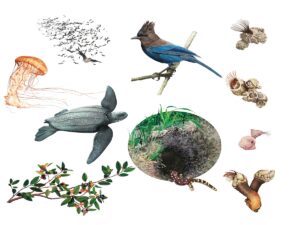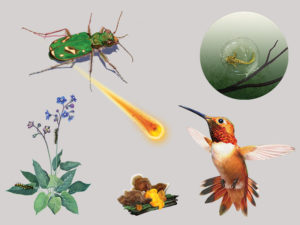This winter, the traffic bottlenecks around Santa Rosa might be a little easier to manage–at least if you happen to be a California tiger salamander.
Santa Rosa’s population of tiger salamanders, declared endangered in 2000, will be able for the first time to get to breeding ponds through several special tunnels installed underneath busy roads.
David Cook, a biologist from the Sonoma County Water Agency, says the tunnels could reduce roadkill and make a difference for the dwindling population. “These salamanders are migrating to a pond to breed, and if they get run over before they breed, then that’s a big hit for the population,” says Cook. “The important thing to consider about tiger salamanders is that they occur in lowland areas in Central California, which have a really high pressure for development, so the salamanders are always having these kinds of urban conflict issues. If these tunnels can be effective, then it’s one more resource to reduce the impacts from urbanization.”
The California tiger salamander once occurred throughout the Santa Rosa Plain, when there was still a vast oak savannah with a complex connecting system of vernal pools, creeks, and seasonal wetlands. Now, however, urban development has eliminated most of the salamander’s habitat. Its life cycle is called biphasic – it requires two distinct habitats, wetlands and uplands. If one is eliminated, the salamander will go extinct. While the wetlands provide breeding grounds for the salamander and a home for young from larval stages through metamorphosis, the uplands provide access to burrows dug by gophers and other small mammals, where the adult salamanders find shelter during the warm summer months.
In August of this year, the U.S. Fish and Wildlife Service designated 47,383 acres on the Santa Rosa Plain as a protected critical habitat for the California tiger salamander. But, as development is still being proposed for the area, it is unclear how much the critical habitat designation will help the salamander.
So what is the most important thing that can be done for the salamander?
“Ultimately, we have to stop destroying their habitat,” says Brock Dolman, an activist and Water Institute Director at the Occidental Arts and Ecology Center. “We need to maintain the largest contiguous patches of connected habitat. We can’t lose any ground on the existing habitat because it’s already way too fragmented.”
Many Sonoma County residents are probably unaware of the existence of this sensitive creature in their midst, but the California tiger salamanders represent an ecosystem that itself is on the verge of dying out.
“I personally think that people should be concerned about the salamander because they are an indicator of the integrity of a certain ecosystem that has both an upland terrestrial valley oak savannah and an aquatic system of vernal pools,” says Dolman, who has worked to spread awareness of the salamander and its plight. “That entire complex is unique, and, I think, a critical ecological system to be preserved in its own right.”
Dolman and Cook appeared in a funny and informative 2009 mock news video from the fictional KCTS station (that’s K-CA-Tiger-Salamander!).

.jpg)



-300x200.jpg)